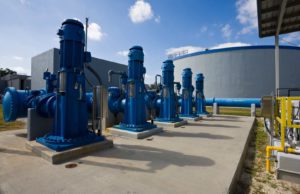Thanks to easy access and high speed internet, along with the availability of low cost internet devices, a new world of high volume data sharing has been created! This data can be used to increase productivity by providing the possibility and options to analyze data using secure automation systems. So why not use these technologies and get the most out of it instead of opposing this idea of data sharing?
Living in an era of internet, data sharing and analysis
We are living in age of high volume Internet data which is easily accessible by using low cost devices. Gone are the days when you have to connect your computer to a phone line, dial in, wait and listen to some very unpleasant noises before you get connected to the internet.
Today, we have smart phones in our pocket that are always connected to the internet – allowing us to access social media sites, buy groceries, read QR codes and even do online banking.
Looking at the concepts of the “Internet of Things” and “Big Data”, two things are clear:
- Different devices can talk to each other
- Also data can be transmitted, shared, and analyzed
Let’s see how data can be shared and analyzed in terms of automation systems? During my meetings with major Pump manufacturers in Germany I was told that one of their major issues is they don’t know where their pumps are going /located. About 150000 pumps are unaccounted for as the pumps are being sold to the distributors and in turn the distributors are selling to the EPC (electrical procurement and construction) and then the pump goes to an end user locations.
In accordance with many regulations the use of variable speed drive (VSD) driven pumps are becoming very common as they are more energy efficient and can allow for pump manufacturers to resolve issues by using drives that are connected and also show diagnostics via QR codes.
Figure 1: VSD driven pumps are 30% more efficient than fixed speed pumpsBy reading the QR code, the operator is actually reading the status and he /she can access the manufacturer internet /registration page. Similarly, using a customized app provided by the manufacture, the location can be also is transmitted. This can help the pump manufacturer to mitigate the problem of “lost location” and also enables the user to get direct service from the manufacturer. For the manufacturer, it provides an opportunity for better services – see figure 2
Figure 2: Drives with active QR codes can be used not only for diagnostics but also helps operator to go to manufacturer internet page for registration /supportShould we share data and with whom? Consider the automation system shown in figure 3. The data broadcasted by an automation system can be used by consumers. It is like sharing the data from a machine switch over a data stream which is running across the enterprise or externally. This means there can be two types of consumers: Internal and external consumers…
Internal consumers: A typical industrial consumer would include departments like operations, maintenance, HR /training, Finance (please see figure 3).
Operation departments need the info/ dashboard to monitor and optimize production in a timely manner. Maintenance departments need to make sure that assets are always running. For both, maintenance and operations it’s important to know if there are any abnormalities by comparing the data at different points of time. Training departments along with HR can have a clear view of the training requirements if the alarms or operating data is varying from shift to shift. Last but not least, by analyzing the operating data over the period of time, finance departments can plan refurbishments and investing in new machines.
External consumers: There can be multiple consumers. One of the main consumers can be Utility companies providing electricity to the factory. Knowing the energy consumption data, the utility company can fine tune their “smart cities” philosophies but also be able to offer special tariffs to the factory.
Machine builders would like to have operating data to offer better services and suggest timely spare part requirements.
Figure 3: Data can be shared with internal and external consumersData security is the main question: is this data sharing secure? The data can be secured by first identifying which data has to be shared with whom. Also, certain consumers’ should be allowed to “read” data. If data has to be “written” to the system: algorithms have to be in place to have a two-man confirmation process. This refers to the system that in case someone is trying to write data, then a person inside the factory should be notified and after his /her confirmation, the data could be written (please refer to figure 4)
Figure 4: Readable and writeable data ranges should be defined and shared with concerned consumersConclusion
Figure 5: Start small, start smart – start reading energy related data directly from the drives or by putting an energy meter to start the journey.Want to start? Let’s do it with the idea of “start small but start smart”. Start by getting the data from the drives connected to the controller or by attaching a power meter to an existing small control system. Then start monitoring the machine by sending the data to different department. The data sent by the machine/pump system can be shared and analyzed to plan smart maintenance schedule, training needs, and thus cost effective production. You will find out that with this first small step, you have started gathering data, sharing data and after analyzing data.
We know that the only constant is change: Let’s adapt ourselves to this data sharing and analysis to get our share of success and profitability.

